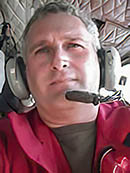

|

|

|
Paul Seguna
Paul is a founding member of the CAAA who has served as Alberta and BC Regional Coordinator and CAAA Vice-President. He retired from the Canadian Armed Forces in September of 2017 after a career spanning forty-two years in the Canadian Naval Reserve (as a Radar Plotter), Regular Navy (as a Ship's Officer and Shipborne Air Controller) and Canadian Forces Public Affairs Branch (as a Public Affairs Officer). Born in Australia, he has had a lifelong interest in art and aviation and resides in Victoria, British Columbia.
Please Visit my Website: http://paulseguna.ca/
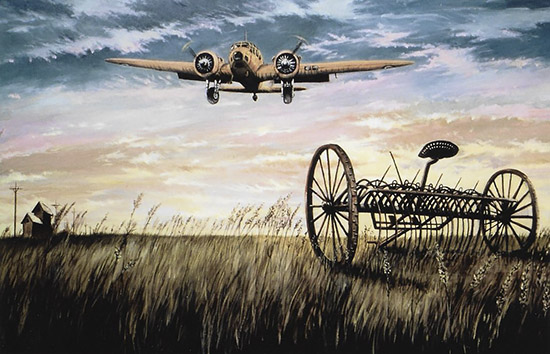
Prairie Fledgling
by Paul SegunaCreated in tribute to the 75th Anniversary of the Canadian Air Force, this painting symbolizes one of the truly outstanding contributions made by Canada to the allied victory in WW II. The British Commonwealth Air Training Program (BCATP) was of such importance to the war effort that US President Roosevelt was moved to call Canada the "Aerodrome of democracy". In a very short time BCATP airfields sprang up at over 100 locations across Canada with the skies reverberating with the sound of aero engines propelling yellow trainers. The aircraft depicted in the painting is an AVRO Anson returning to its airfield in the Canadian hinterland from one of the thousands of flights conducted in the training of over 100,000 airmen from the many countries in the allied cause. The farming machinery in the foreground is a symbolic counterbalance to the airplane and represents Canada's rapid transition in these years from an agricultural society to an aviation powerhouse of first order.
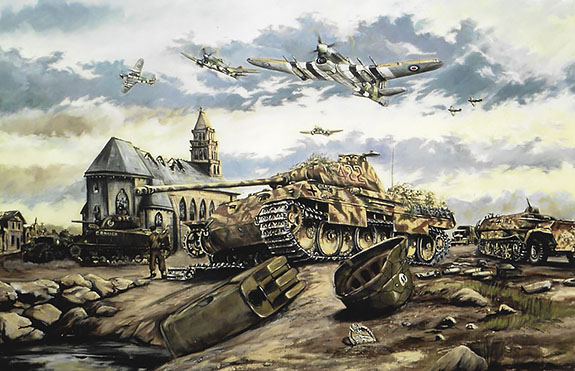
Whirlwind in Normandy
by Paul SegunaThe whirlwind that swept the Nazi Third Reich from western Europe began in Normandy with the allied invasion of June 6, 1944 (D-Day) and the sound of that wind was often carried forth by the powerful Napier Sabre engines of RCAF Typhoon fighter-bombers. The Typhoons decimated Hitler's legions as they moved towards the allied invasion beaches. They relentlessly hit the Panzer divisions and supply columns weakening them before they even contacted our ground forces and later they cleared the way for the advance of allied troops in the liberation of Europe.
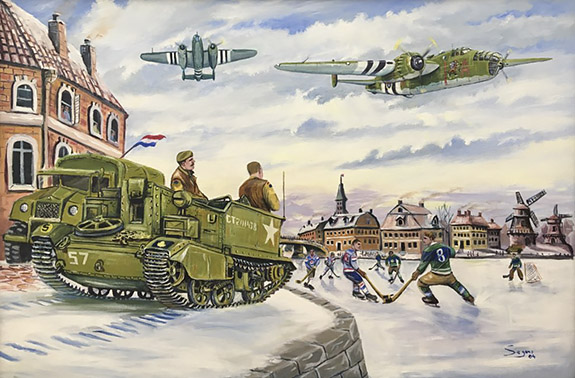
Air Force Assist
by Paul SegunaThis painting is a depiction of a fictional scene representative of an aspect of the Canadian military experience in Holland in 1944-45. In the painting a hockey game is taking place between a Canadian Army team from the Canadian 3rd Infantry Division and a team of Canadian airmen from a local allied airfield. The game is buzzed by an unexpected spectator in the form of a Canadian crewed B-25 Mitchell bomber returning to the airfield from a mission. Many Canadians flew as aircrew with the 2nd Tactical Air Force, a formation of the Royal Air Force composed of squadrons and aircrew drawn from many Commonwealth and allied nations. The B-25 Mitchell squadrons supported the allied armies from the D- Day landings in Normandy through their advance in Northwestern Europe and the liberation of countries such as the Netherlands from the yoke of the Third Reich.
24 x 36 inches
Oil on Canvas
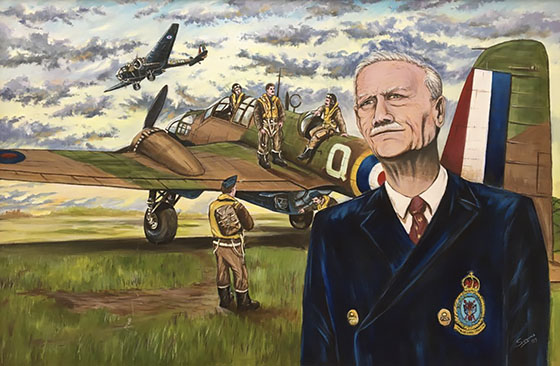
Bomber Pilot Memories
by Paul SegunaThis painting was inspired by my meeting with Wing Commander (Ret'd) T.C. (Cam) Weir who had flown Hampdens during WWII.
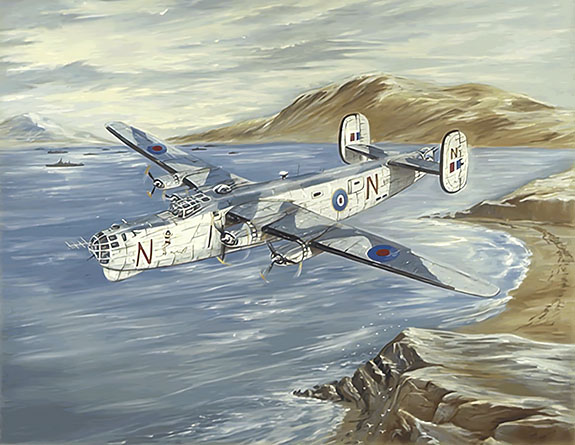
North Atlantic Nannette
by Paul SegunaA Very Long Range Liberator "Nannette" flown by Canadians during the Battle of the Atlantic campaign.
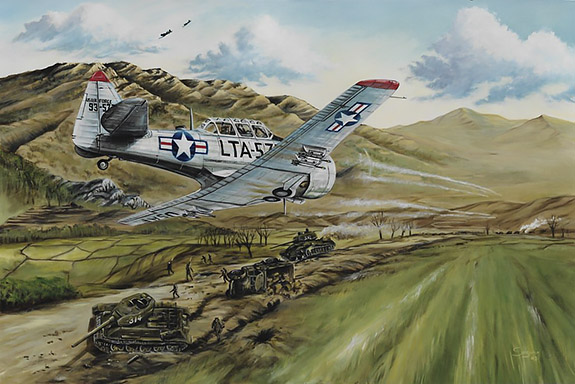
Texan Mosquito in Korea
by Paul SegunaIn an era before precision-guided bombs, 6147 Tactical Control Group, 'The Mosquitoes', of the U.S. 5th Air Force flew dangerous low-level forward air control missions during the Korean War guiding UN fighter-bomber attacks on enemy targets. Although a unit of the U.S. Air Force, members of UN forces, including Canada, saw service with the unit flying in the rear seat of the T-6 Texan as airborne controllers. Depicted in the painting is a typical action in 1952 involving LT W.C. "Robbie" Robertson, 1PPCLI, during which a Texan has descended very low to the ground to fire marker rockets at a target. In this case the target is an area of caves being used as ammunition dumps by North Korean forces.
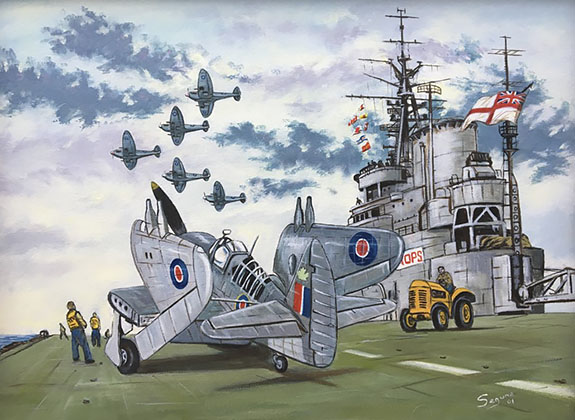
RCN Seafire Flypast
by Paul SegunaThe RCN Seafire air display team flies past HMCS WARRIOR. The Seafire was flown from RCN aircraft carriers in the late 1940s. The naval air display team flying these fighters is seen here in a formation flypast. The Seafire team performed for the public in various locations in Canada. In the foreground on deck is an RCN Fairey Firefly naval attack aircraft.
2001
18 x 24 Inches
Acrylic on Canvas
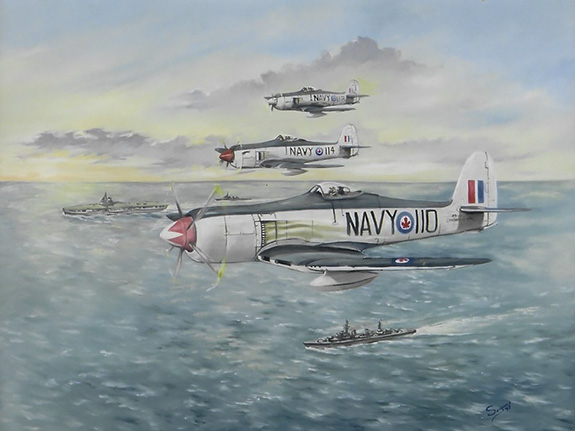
RCN Sea Furies
by Paul SegunaRoyal Canadian Navy (RCN) Sea Fury fighters fly as Combat Air Patrol (CAP) in the early dawn during naval exercises in the Carribean. Below them is a Canadian Task Group centered on HMCS MAGNIFICENT, a destroyer in the "plane guard" position astern as she prepares for deck launches. Canada's Fleet Air Arm enjoyed a golden era from the late 40s to the mid sixties as the RCN deployed several types of carrier aircraft in HMCS WARRIOR, MAGNIFICENT and BONAVENTURE.
Oil on Canvas Board
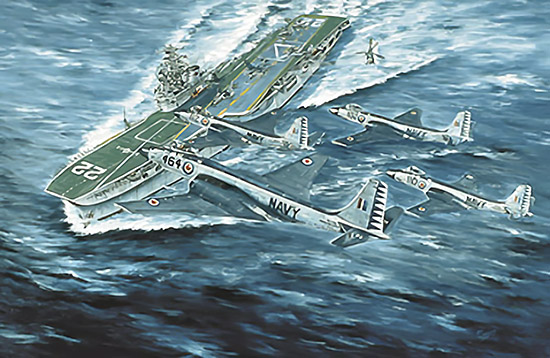
Grey Ghost Flypast
by Paul SegunaRoyal Canadian Navy (RCN) Banshees conduct a low-level pass over H.M.C.S BONAVENTURE, Canada's last aircraft carrier, during a precision flying display at sea. The RCN aerial display team, named the "Grey Ghosts", earned an enviable reputation for their flying skills during the 1960's. The Banshee was Canada's only operational naval jet fighter and served in that capacity in the RCN Fleet Air Arm. In the painting, the carrier has just turned into the wind and aircraft are being prepared for flying operations on deck. A Banshee is being keyed up for launch while a Tracker anti-submarine patrol aircraft, is unfolding its wings in preparation for its turn. Other Trackers are ranged on the after flight deck with the ever-present rescue helicopter, "Pedro", having just launched and taking up position in the carrier's wake - ready for any mishap requiring a quick rescue of a ditched aviator.
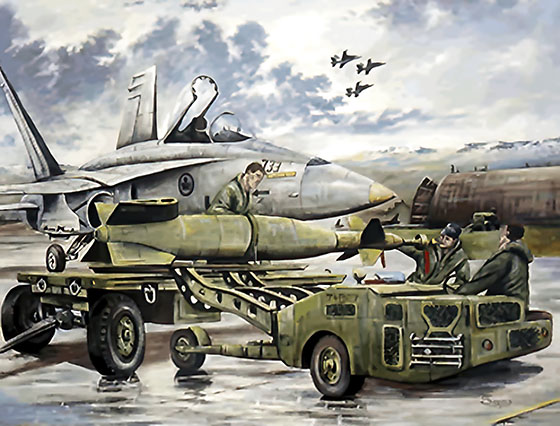
Ground Support Aviano
by Paul SegunaCanadian CF-18 fighter-bombers from 441 Squadron based in Cold Lake, Alberta, were deployed to the NATO airbase in Aviano, Italy during the Kosovo air campaign. The CF-18s were worked on by their ground crews in all weather conditions in support of air operations. This painting, commissioned by 441 Squadron, was one of eight created by several artists under special commission documenting the squadron's operations during that air campaign.
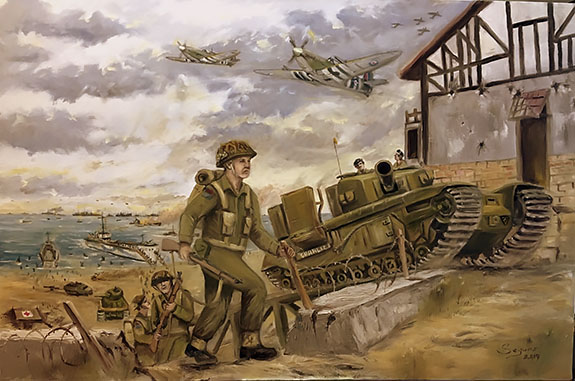
Juno Beach Jump Off
by Paul SegunaThis painting commemorates the 75th anniversary of the 6 June 1944 D Day landings in Normandy by the Canadian Forces. The painting depicts Canadian Infantry from the 3rd Infantry Division advancing past the beach defences after the initial assault.
The infantry is being supported by specialized tanks of the British 79th Armoured Division, nicknamed "Hobart's Funnies" after the Division Commander. The tank in the foreground is a Churchill AVRE (Armoured Vehicle Royal Engineers) armed with a 290mm Spigot mortar, known as a 'Petard", which fired a 40lb demolition charge called a "flying dustbin" used to demolish concrete obstacles and bunkers.
The landing beach is the scene of the unloading of troops and vehicles, including another type of specialized armoured vehicle a DD (Duplex Drive) amphibious Sherman tank), from landing ships and craft of RCN while in the distance offshore ships of the RCN continue to support the push inland by landed troops with naval gunfire support.
Overhead two RCAF Spitfire fighters conduct a low pass over the beach while at a higher altitude transport aircraft fly inland to reinforce the paratroops dropped before the beach landings. The building in the painting is iconic of the Canadian landings and has become of focal point of Canadian visitors to Juno Beach.

